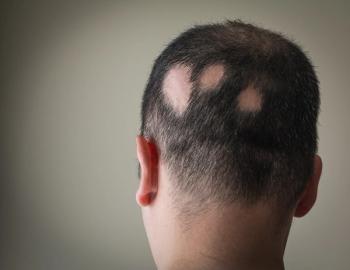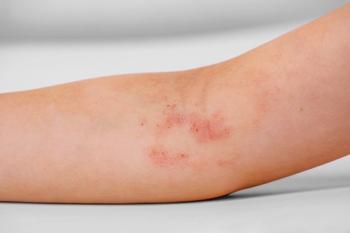
- Consultant for Pediatricians Vol 8 No 5
- Volume 8
- Issue 5
What is the cause of this boy's perioral dermatitis?
A persistent, eczematous dermatitis had developed in the perioral area during the winter months in this 10-year-old boy. Topical corticosteroid creams had been tried, and these seemed to help some, but the ondition never really cleared. Because of the failure of the corticosteroid creams, a topical antifungal cream had also been tried; however, this, too, was of limited effectiveness.
Case: A persistent, eczematous dermatitis had developed in the perioral area during the winter months in this 10-year-old boy. Topical corticosteroid creams had been tried, and these seemed to help some, but the condition never really cleared. Because of the failure of the corticosteroid creams, a topical antifungal cream had also been tried; however, this, too, was of limited effectiveness. What is the cause of this patient’s condition-and what treatment would you recommend?
After I observed the child for 5 to 10 minutes, the diagnosis became evident. Once his attention was focused elsewhere, his tongue darted out to lick his cheek. For the most part, the patient tried hard to keep his tongue in his mouth. It turned out that he had been repeatedly admonished by his parents not to “stick his tongue out” in public, which they considered to be very bad manners. He certainly was not about to do this in a doctor’s office with his parents present. However, his face hurt, and he felt a strong urge to moisten it every 5 to 10 minutes to reduce the discomfort.
Pathophysiology of lip-licker’s eczema. This boy had discovered that the skin is much more comfortable when wet. Unfortunately, his chronic licking had established a pattern of accelerated evaporation and destruction of the epidermal barrier, which resulted in the eczematous process. This is the same phenomenon seen in children who suck one lip under another or who lick around their lips in ever-widening circles.
Treatment. The little improvement the patient experienced with topical corticosteroids and antifungals resulted from these agents’ cream base, which temporarily halted the evaporation process. Thus, the most successful treatment of lip-licker’s eczema involves a water barrier cream that a child can take to school and apply several times every hour. Topical corticosteroids are rarely of any value; moreover, they may impede epidermal barrier repair. Time and patience are also required for successful management.
Articles in this issue
over 16 years ago
Drug-Induced Urticaria in a Teenagerover 16 years ago
Adolescent Confidentiality: Where Are the Boundaries?over 16 years ago
Erythema Ab Igne From a Laptopover 16 years ago
Caudal Regression Syndromeover 16 years ago
Boy With Annular, Asymptomatic, Flesh-Colored Wrist Lesionover 16 years ago
Neuroblastoma in a Child With Persistent Hip Painover 16 years ago
Antifungals for Tinea Corporis: When to Choose an Oral Agentover 16 years ago
Toddler With Decreased Appetite and ActivityNewsletter
Access practical, evidence-based guidance to support better care for our youngest patients. Join our email list for the latest clinical updates.














